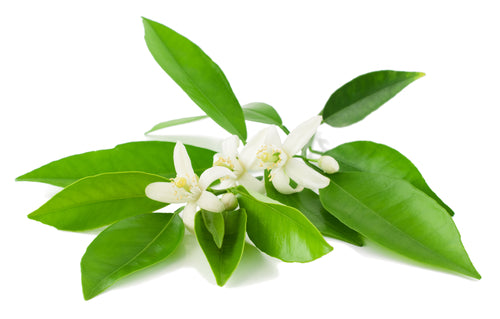
$11.95 $19.95
| /
REJUVENATE SKIN - CALMING - SOOTHE PAIN
Sourced from the small white flowers of the bitter orange tree, neroli’s iconic perfume fragrance can be described as a deeply intoxicating mix of citrus and floral aromas. Organic Neroli essential oil offers a variety of impressive benefits from calming to beautifying.
USDA-CERTIFIED ORGANIC AND CRAFTED WITH QUALITY FEATURING:
Rejuvenate Skin: Known for its ability to regenerate skin cells and improve elasticity. Beneficial for wrinkles, scars, stretch marks and appropriate for all skin types.
Calming: Inhaling Neroli essential oil can have immediate and continuous positive effects on blood pressure and cortisol levels (the stress hormone).
Soothe Pain: Helps reduce inflammation to provide relief from pain, muscle aches, and painful joints.
Easy Application: Use the high-quality stainless steel rollerball for precise application to the skin, pulse points, or a specific part of the body. Pre-diluted to 10% with Certified Organic Caprylic/Capric Triglyceride (MCT–fractionated coconut) oil for safe and effective aromatherapy.
Travel-Friendly: Our pure essential oils are also incredible travel accessories—small enough to fit in a bag or purse, or to pass through airport security. A controlled amount of essential oil is released only when the roller ball moves across a solid surface so you don't have to worry about spills during travel. Take them with you wherever you go for calm and wellness!
Quality, Safety & Efficacy Guaranteed: GC-MS tested, tamper sealed, and includes a traceable lot number.
Precautions: If pregnant or lactating, consult your healthcare practitioner before using. Discontinue use if skin irritation occurs. Avoid contact with eyes. For external use only.
Organic Citrus aurantium (Neroli), pre-diluted to 5% with Organic Caprylic/Capric Triglyceride (fractionated coconut)
What is neroli essential oil?
Our Organic Neroli Essential Oil is steam distilled from the flowers of Citrus aurantium, the bitter orange tree. It's commonly used to moisturize and restore the skin as well as relax the mind and reduce sensitivity to pain.
What does neroli oil smell like?
Our Organic Neroli Essential Oil has an exotic floral and citrus scent.
What part of the plant is used and how is the essential oil extracted?
Our Organic Neroli Essential Oil is steam distilled from the flowers of Citrus aurantium.
Does neroli freshen skin?
When applied on the skin, Neroli Essential Oil intensely moisturizes the skin and boosts the natural process of cell regeneration.
How do you use an essential oil roll-on?
Essential oil roll-ons make applying essential oils easier than ever. They are pre-diluted so they can safely be applied directly to the skin with our stainless steel rollerball. Essential oil roll-ons are typically applied to pulse points, which allows for easier absorption–temples, wrists, ankles, side of the neck, inner elbow.
Where do you source your Organic Neroli Essential Oil?
All of our essential oils are ethically and sustainably sourced. Our Organic Neroli Essential Oil is sourced from Egypt.
Where does Silk Road Organic bottle their essential oils?
All of our oils are blended and bottled in sunny California.
Is Organic Neroli Essential Oil Roll-on pre-diluted?
Organic Neroli Essential Oil roll-on is pre-diluted to 5% with Organic Caprylic/Capric Triglyceride (fractionated coconut).
What is the shelf life of this product?
Essential oils do not expire. They do not grow mold. They also do not grow mildew or even yeast. But that does not mean they will last forever. Organic Neroli Essential Oil will last for 1-2 years after opening.
By the end of the 17th century, Anne Marie Orsini, duchess of Bracciano and princess of Nerola, Italy, introduced the essence of the bitter orange tree as a fashionable fragrance by using it to perfume her gloves and her bath. Since then, the term "neroli" has been used to describe this essence. Neroli has a refreshing and distinctive, spicy aroma with sweet and flowery notes. The oil of romance, Neroli Essential Oil has long been used in weddings because of both its calming properties and its aphrodisiac effects.

